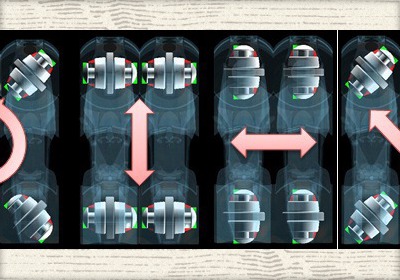Dassault Systèmes and Riversimple partner for eCar Design Contest
Mon, 01 Aug 2011Dassault Systèmes, in collaboration with Riversimple and the 40 Fires foundation, launched their eCar Design Contest recently, designed to encourage cooperation and the development of ideas on an open source platform.
The companies had been in talks for some time regarding a joint project and this competition – a completely holistic, closed-loop approach to the building, sale and use of a car – is the result of their successful collaboration.
Christopher Reitz, head designer at Riversimple, says, "The open source platform is a fantastic tool. Riversimple and Dassault like to be on the latest technology so it was a good match."
"The idea for a competition mainly for students crystallized from several meetings to find out how we could highlight that Dassault have this innovative system," he adds.
From his time teaching at universities Reitz dealt with students who asked how best to promote their portfolios in preparation to starting out on a design career. From talking with them he says he learnt a lot, and so this competition is a nice way of giving back.
The two companies began working with each other on the project a year ago, with the purpose of finding young designers with potential and raising awareness of the subject matter.
"It is also a good way for them to develop their skills in using the open source system, and is a good platform for them to promote themselves on," Reitz says.
Anne Asensio, vice-president of Dassault Systèmes' Design Experience, believes that because the new generation is more willing to share their ideas and collaborate, there is the opportunity to see some exciting concepts.
"We wanted to formalize in a new context a place where people feel secure and visible in their creativity," she says. She considers the traditional approach of protecting designs for as long as possible can hinder the design process and development, creating what Asensio calls a 'typical black hole effect'. This competition is, therefore, creating the possibility of bringing ideas to develop, revealing new design talent and bringing new ideas to the car design community.
Reitz hopes that any unearthed skilled designers will help Riversimple bring more products onto the market, and believes that the competition is motivation for young designers to level themselves against a wide range of competitors, helping to further hone their skills.
"The prizes are very motivating," he says, "A top five mention promotes and communicates your name which is very helpful in the future, while there is also the chance to win design software, money, or the possibility of joining a studio and meeting people from the industry, which is extremely beneficial."
The prize for the winning designer in this competition will accompany Dassault Systèmes to the Frankfurt Auto Show in September and present their proposal to industry professionals and the public.
This design challenge focuses on the 'new generation of car users' who are conscious about the effect that their vehicles have on the environment, and who are proactive in finding ways to find more eco-friendly means of transport.
Asensio is of the opinion that the open source platform will 'expand the boundaries of style and design as know it today', but will not dominate their traditional forms. "The web platform will play a crucial role today and in the future, but creativity relies on people. The platform is just a good enabler, it is not replacing creativity," she says.
"We do not design by committee, we still need visionary people to propose things and create, and this platform is space to leverage creative people, but it will not completely transform or replace creative teams."
The competition closed on 17 July before the five finalists were announced four days later. They will now advance into the 'Model It' round, where they will create 3D models of their designs.
Asensio says that when it came to considering the submissions, she had four criteria in mind. The first category was the design of the car – how the concept looked, and the how it had evolved. The second recognized the innovative aspect of the designs, relating to the technology and interesting systemic approaches.
The third criteria critiqued the presentation of the concept – how clear the proposal was and how clearly it was communicated – while the fourth category examined the styling of the concept, considering the look, balance, mass, propulsion, color harmonies and the consistency of the overall design.
Ido Baruchin's 'Otto', Clément Hoffner's 'Flower' and Ernö Péter's 'Definitive' earned them a place in the final, alongside Raj Shekhar's 'Hydro-Hub' and Acatrinei Lucian Nicholae's 'Libertis'.
By Rufus Thompson

